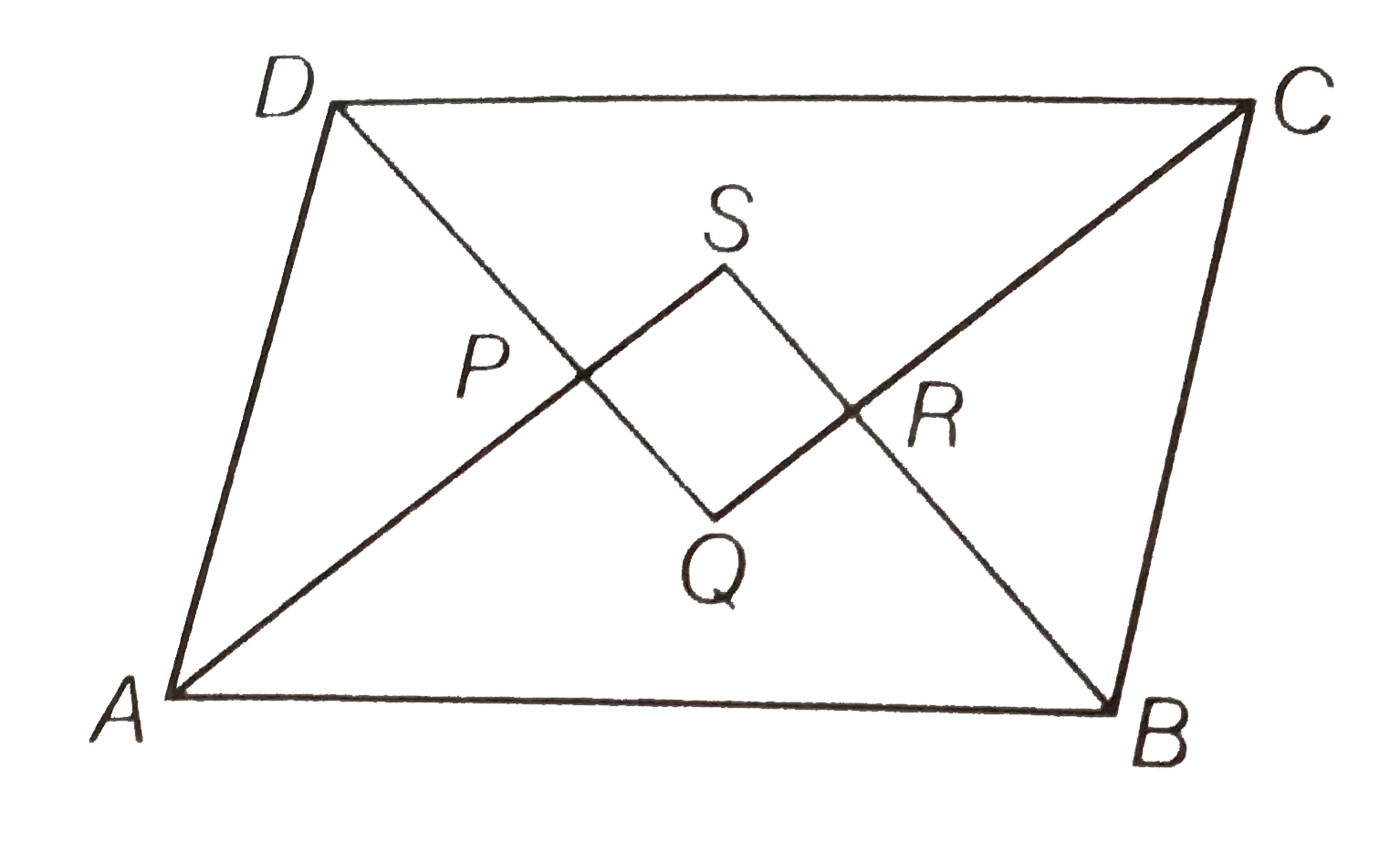The bisector of the angles of a parallelogram enclose a ..................
Parallelogram
square
Rhombus
Rectangle
The correct Answer is:D
To solve the question "The bisector of the angles of a parallelogram enclose a ..................", we will follow these steps:
Step 1: Understand the Problem
We need to determine what type of quadrilateral is formed by the angle bisectors of a parallelogram.
Step 2: Draw a Diagram
Draw a parallelogram ABCD. Label the angles A, B, C, and D. Then, draw the angle bisectors of angles A, B, C, and D, and label the points where these bisectors intersect as P, Q, R, and S.
Step 3: Analyze the Angles
Since ABCD is a parallelogram, we know that:
- Angle A + Angle D = 180° (consecutive angles)
- Angle B + Angle C = 180° (consecutive angles)
Step 4: Bisect the Angles
The angle bisectors divide each angle into two equal parts:
- Let the angle bisector of angle A be divided into two angles: 12A and 12A.
- Similarly, for angle D, it will be 12D and 12D.
Step 5: Sum of Angles at Intersection
At point S (intersection of the bisectors of angles A and D), we have:
12A+12D=12(A+D)=12(180°)=90°
Thus, angle DAS + angle ADS = 90°.
Step 6: Analyze Triangle ASD
In triangle ASD:
Angle ADS+Angle DAS+Angle ASD=180°
Substituting the known values:
90°+Angle ASD=180°
This implies:
Angle ASD=90°
Step 7: Vertically Opposite Angles
Since angle ASD = 90°, angle RSP (which is vertically opposite to angle ASD) is also 90°.
Step 8: Find Other Angles
Using the same reasoning, we can find that:
- Angle RQP = 90°
- Angle SRQ = 90°
- Angle QPS = 90°
Step 9: Conclusion
All angles of quadrilateral PQRS are 90°. Therefore, PQRS is a rectangle.
Final Answer
The bisector of the angles of a parallelogram encloses a rectangle.
---
We need to determine what type of quadrilateral is formed by the angle bisectors of a parallelogram.
Draw a parallelogram ABCD. Label the angles A, B, C, and D. Then, draw the angle bisectors of angles A, B, C, and D, and label the points where these bisectors intersect as P, Q, R, and S.
Since ABCD is a parallelogram, we know that:
- Angle A + Angle D = 180° (consecutive angles)
- Angle B + Angle C = 180° (consecutive angles)
The angle bisectors divide each angle into two equal parts:
- Let the angle bisector of angle A be divided into two angles: 12A and 12A.
- Similarly, for angle D, it will be 12D and 12D.
At point S (intersection of the bisectors of angles A and D), we have:
12A+12D=12(A+D)=12(180°)=90°
Thus, angle DAS + angle ADS = 90°.
In triangle ASD:
Angle ADS+Angle DAS+Angle ASD=180°
Substituting the known values:
90°+Angle ASD=180°
This implies:
Angle ASD=90°
Since angle ASD = 90°, angle RSP (which is vertically opposite to angle ASD) is also 90°.
Using the same reasoning, we can find that:
- Angle RQP = 90°
- Angle SRQ = 90°
- Angle QPS = 90°
All angles of quadrilateral PQRS are 90°. Therefore, PQRS is a rectangle.
The bisector of the angles of a parallelogram encloses a rectangle.
Topper's Solved these Questions
- BOOK - CBSE COMPLEMENTARY MATERIALCHAPTER - QUARILATERAL EXERCISE - PART-A( True (T) and False (F))6videos
QUARILATERAL
- BOOK - CBSE COMPLEMENTARY MATERIALCHAPTER - QUARILATERAL EXERCISE - Part - B12videos
QUARILATERAL
- BOOK - CBSE COMPLEMENTARY MATERIALCHAPTER - PROBABILITY MIND MAPEXERCISE - PRACTICE TEST6videos
PROBABILITY MIND MAP
- BOOK - CBSE COMPLEMENTARY MATERIALCHAPTER - STATISTICSEXERCISE - PRACTICE TEST5videos
STATISTICS
Similar Questions
Knowledge Check
- Question 1 - Select One
The quadrilateral formed by the bisectors of the angles of a parallelogram is a
 ATrapeziumBKiteCRectangleDNone
ATrapeziumBKiteCRectangleDNone - Question 2 - Select One
Consider the following statements
1. The bisectors of all the four angles of a parallelogram enclose a rectangle.
2. The figure formed by joining the midpoints of the adjacent sides of a rectangle is a rhombus.
3. The figure formed by joining the midpoints of the adjacent sides of a rhombus is a square.
Which of these statements are correct ?A1 and 2B2 and 3C3 and 1D1, 2 and 3 - Question 3 - Select One
Shape made by the bisectors of angles of a parallelogram is
ARectangleBSquareCCircleDStraight line
In the alongside diagram, the bisectors of interior angles of the parallelogram PQRS enclose a quadrilateral ABCD. Show that:
View SolutionThe bisectors of any two adjacent angles of a parallelogram intersect at: (a)30∘ (b) 45∘ (c) 60∘ (d) 90∘
View SolutionThe angle bisectors of a parallelogram form a rectangle.
View SolutionThe angle bisectors of a parallelogram form a rectangle.
View SolutionThe bisectors of any two adjacent angles of a parallelogram intersect at
View Solution

